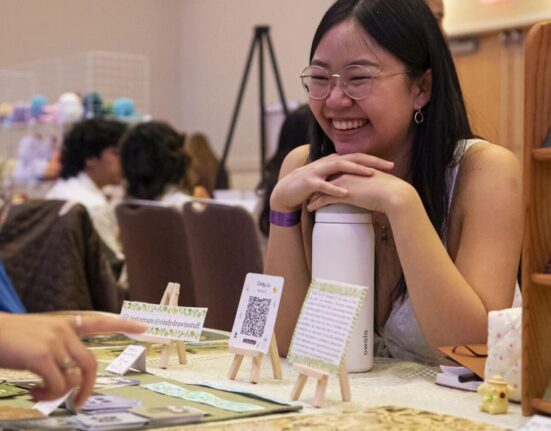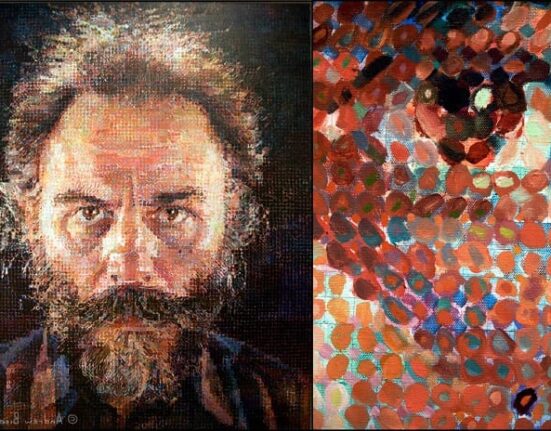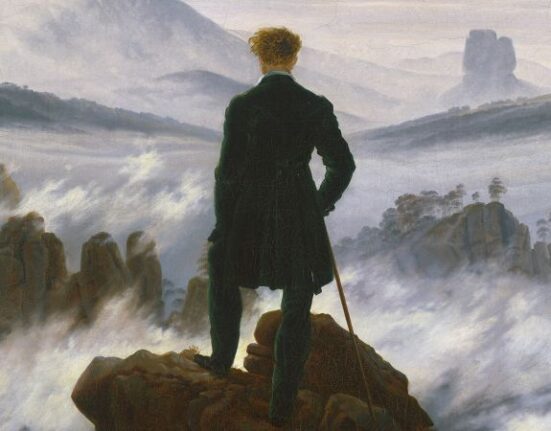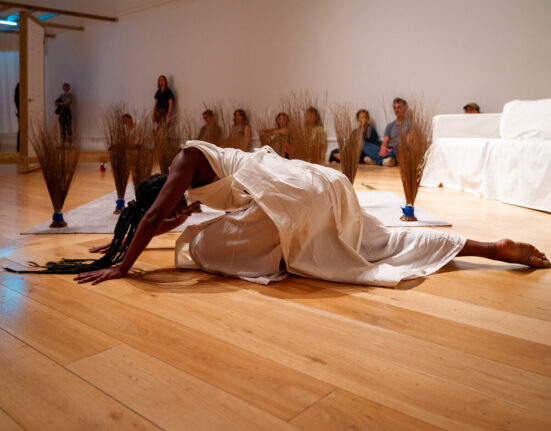In December 1931, the Italian commissioner of the 18th Venice Biennale penned a plea to organisers of the United States pavilion, who had yet to fully deliver their vision for the impending international art exhibition. “We should like some of your very great artists like Whistler,” he wrote, “and as for the living ones we should allow a room for [Paul] Manship as Sculptor, and [Maurice Sterne], or some others, as painters.”
The following January—four months before the exhibition’s opening—a reply arrived from New York. It confirmed that the US pavilion would feature, out of four rooms, one devoted to art by Native Americans, among them the Pueblo painters Fred Kabotie and Awa Tsireh. It would include neither Whistlers, nor Homers, nor Sargents—conspicuously setting aside the era’s assumed “great artists” to shine an international spotlight on lesser-known Indigenous names.
The resulting display was historic: it marked the first time that Native American artists represented the United States at the prestigious art exhibition, a distinction that has repeated only this month, with the Chocktow Cherokee artist Jeffrey Gibson’s takeover of the US pavilion at the 60th edition of the Biennale (until 24 November). Yet it has largely been forgotten, according to Jessica L. Horton, a professor of modern and contemporary Native American art at the University of Delaware.
“We are versed in a truism that Native artists have never exhibited in the US pavilion,” she argued in a 2015 paper. That claim was repeated as recently as last year: The New York Times issued a correction to an article that had erased this history, apparently relying on information provided by the commissioners of the 2024 US pavilion.

Installation view of the space in which to place me, Jeffrey Gibson’s exhibition for the United States pavilion at the 60th Venice Biennale, 20 April-24 November 24. At centre: WE HOLD THESE TRUTHS TO BE SELF-EVIDENT, 2024 Photograph by Timothy Schenck.
Today, little information remains about the Native art section of the 1932 pavilion, despite its commissioner, Martin Birnbaum, proclaiming it “the most popular exhibition of the entire display of all the nations”, the Times reported that May. Horton dove into historical archives during a 2011 trip to Venice, where she found the exhibition catalogue listing the participating artists: Ma Pe Wi, Santiago Cruz, Oqwa Pi, Tonita Peña, Awa Tsireh, Julian Martinez, Pen Yo Pin, Tse Ye Mo, Otis Polelonema and Fred Kabotie. Among their contributions, only one painting by Kabotie, Mountain Sheep Dance (undated), was reproduced in the catalogue, which did not include serious discussion of their work, Horton says. Installation photographs revealed that textiles, jewelry and pottery were shown alongside paintings, many of them depicting the motions and rituals of Pueblo dance. Most of their makers, excepting the potters Maria Martinez and Tonita Roybal, remain anonymous. It was “a very ethnographic type of presentation”, Kathleen Ash-Milby, a co-commissioner of Gibson’s 2024 pavilion, told NPR.
Other rooms of the 1932 pavilion featured paintings by non-Native artists including George Bellows, Arthur B. Davis and John Sloan, who is credited with assembling the Native art selection. Sloan had once described Pueblo watercolours as “the only 100% American art produced in this country”, and in 1931 had co-organised The Exposition of Indian Tribal Arts, a blockbuster touring exhibition of Native objects and paintings. Due to its success, a large selection of the works from that show were sent to Venice.
‘Aesthetic nationalism’
“His whole argument rested on Native art offering a modern aesthetic with ancient roots on the continent,” Horton tells The Art Newspaper. Contemporaneous reports affirmed this sentiment: responding to the 1931 exposition in a WOR radio broadcast, the critic and collector Christian Brinton claimed Native art “as an artistic treasury not only older but fresher and purer than anything Europe has to offer”. A Times headline announcing “Venice to exhibit art of Americans” was accompanied by the subheading: “An entire gallery to be given over to work of Indians.”
But this “export of aesthetic nationalism” to Venice, Horton argues, resulted in what she calls the pavilion’s ultimate “malfunction” as conflicting values came to the fore.
“There’s always been this complexity around who [Native artists] represent when we try to nationalise art, and that came out really clearly in the competing nationalisms on both sides of the Atlantic in the 1930s,” she says. “That made it hard for the organisers of the pavilion to swallow this choice, that Native artists could represent the United States as the nation’s great artists. Not everyone was ready to get on board with that, and so it was not claimed proudly by the organisers as a success.”
In her research, she details how Birnbaum slighted the pavilion in his introduction to the catalogue, suggesting that the country’s “truly outstanding works” were absent. Organisers also found the press response, which overwhelmingly failed to mention in detail the Native artists, disappointing. “They determine that this was a failure of representation,” Horton says.
Such transatlantic exhibitions of Native American art were not infrequent in the 1920s and 30s, reflecting collectors’ and patrons’ burgeoning interest in the Santa Fe market in particular. Most of the work was made by Native artists for consumption beyond their communities, with the knowledge that their art might travel. However, it was not often that overseas exhibitions, like the US pavilion show at the 1932 Venice Biennale, parsed the full complexities of artists’ visual and cultural choices, especially given that artistic merit was evaluated through a Western lens and by Eurocentric standards.
Radical for its time
Still, Horton says it would be a simplification to attribute the diminished legacy of the 1932 pavilion to a failure of well-intentioned white patrons to properly contextualise the work. “Sloan was doing something politically radical for his moment,” she says. “Within the cultural politics of the moment—especially in the 1920s, when Native American dancing was outlawed—just to be a champion of Native art and culture was a fairly radical decision to make as a white person circling in elite East Coast circles.”
The historical record further illuminates how the 1932 pavilion faded from dominant narratives. There is surprisingly little scholarship on the display despite its import. The whereabouts of many works in Sloan’s selection are unknown; due to the scarcity of information in the catalogue, Horton was able to locate only Kabotie’s paintings Mountain Sheep Dance and Snake Dance (around 1930) in the collection of the Smithsonian’s National Museum of the American Indian. Tonita Peña’s painting Basket Dance was later acquired by the Whitney Museum of American Art for $225.87—setting a record for the highest price paid for a Pueblo painting at the time. But Basket Dance has since disappeared from the Whitney’s collection, along with all related records.
Much has evolved in the ways institutions curate and care for Native contemporary art. But the US pavilion at the 1932 Biennale highlights complexities in the field that are unchanging and ever important, around notions of sovereignty, citizenship, rights and representation.
“Native American art didn’t fit that paradigm [of nationalism] neatly or clearly in the 1930s, any more than it does today,” Horton says. “The fact that it’s taken this long for a Native artist to again be invited into that position speaks to some real ambivalence, politically, around where art and sovereignty intersect.”







